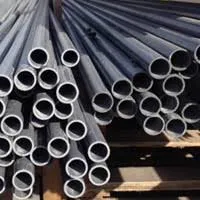
-
 Afrikaans
Afrikaans -
 Albanian
Albanian -
 Amharic
Amharic -
 Arabic
Arabic -
 Armenian
Armenian -
 Azerbaijani
Azerbaijani -
 Basque
Basque -
 Belarusian
Belarusian -
 Bengali
Bengali -
 Bosnian
Bosnian -
 Bulgarian
Bulgarian -
 Catalan
Catalan -
 Cebuano
Cebuano -
 China
China -
 China (Taiwan)
China (Taiwan) -
 Corsican
Corsican -
 Croatian
Croatian -
 Czech
Czech -
 Danish
Danish -
 Dutch
Dutch -
 English
English -
 Esperanto
Esperanto -
 Estonian
Estonian -
 Finnish
Finnish -
 French
French -
 Frisian
Frisian -
 Galician
Galician -
 Georgian
Georgian -
 German
German -
 Greek
Greek -
 Gujarati
Gujarati -
 Haitian Creole
Haitian Creole -
 hausa
hausa -
 hawaiian
hawaiian -
 Hebrew
Hebrew -
 Hindi
Hindi -
 Miao
Miao -
 Hungarian
Hungarian -
 Icelandic
Icelandic -
 igbo
igbo -
 Indonesian
Indonesian -
 irish
irish -
 Italian
Italian -
 Japanese
Japanese -
 Javanese
Javanese -
 Kannada
Kannada -
 kazakh
kazakh -
 Khmer
Khmer -
 Rwandese
Rwandese -
 Korean
Korean -
 Kurdish
Kurdish -
 Kyrgyz
Kyrgyz -
 Lao
Lao -
 Latin
Latin -
 Latvian
Latvian -
 Lithuanian
Lithuanian -
 Luxembourgish
Luxembourgish -
 Macedonian
Macedonian -
 Malgashi
Malgashi -
 Malay
Malay -
 Malayalam
Malayalam -
 Maltese
Maltese -
 Maori
Maori -
 Marathi
Marathi -
 Mongolian
Mongolian -
 Myanmar
Myanmar -
 Nepali
Nepali -
 Norwegian
Norwegian -
 Norwegian
Norwegian -
 Occitan
Occitan -
 Pashto
Pashto -
 Persian
Persian -
 Polish
Polish -
 Portuguese
Portuguese -
 Punjabi
Punjabi -
 Romanian
Romanian -
 Russian
Russian -
 Samoan
Samoan -
 Scottish Gaelic
Scottish Gaelic -
 Serbian
Serbian -
 Sesotho
Sesotho -
 Shona
Shona -
 Sindhi
Sindhi -
 Sinhala
Sinhala -
 Slovak
Slovak -
 Slovenian
Slovenian -
 Somali
Somali -
 Spanish
Spanish -
 Sundanese
Sundanese -
 Swahili
Swahili -
 Swedish
Swedish -
 Tagalog
Tagalog -
 Tajik
Tajik -
 Tamil
Tamil -
 Tatar
Tatar -
 Telugu
Telugu -
 Thai
Thai -
 Turkish
Turkish -
 Turkmen
Turkmen -
 Ukrainian
Ukrainian -
 Urdu
Urdu -
 Uighur
Uighur -
 Uzbek
Uzbek -
 Vietnamese
Vietnamese -
 Welsh
Welsh -
 Bantu
Bantu -
 Yiddish
Yiddish -
 Yoruba
Yoruba -
 Zulu
Zulu
Advanced FRP Materials for Thermal and Nuclear Energy Applications in Modern Industries
FRP Materials for Heat and Nuclear Power Applications
Fiber Reinforced Polymer (FRP) materials have gained significant traction in various industries due to their unique properties, including high strength-to-weight ratio, corrosion resistance, and thermal stability. In the context of heat and nuclear power applications, these advanced composite materials are becoming increasingly important as the industry looks for solutions that enhance safety, efficiency, and longevity.
One of the primary advantages of FRP materials is their exceptional resistance to corrosion, a crucial factor in both heat and nuclear power plants. Traditional materials like steel and concrete are susceptible to degradation over time due to the harsh environments they operate in, including exposure to high temperatures, aggressive chemicals, and radiation. FRPs, particularly those reinforced with glass, carbon, or aramid fibers, provide an effective barrier against such environmental challenges. This durability not only extends the lifespan of power plant components but also reduces maintenance costs and downtime, leading to increased overall operational efficiency.
In heat power plants, FRP materials are often used in components that endure high temperatures, such as piping, tanks, and cooling systems. Conventional materials often suffer from scaling, fouling, and corrosion, which can severely hamper performance. In contrast, FRPs can be engineered to have specific thermal properties, allowing for improved heat transfer efficiencies and reduced energy consumption. For instance, FRP chemically resistant tanks can withstand thermal cycling while providing substantial weight savings compared to traditional metal tanks, facilitating easier installation and transport.
When it comes to nuclear power applications, safety is paramount. The use of FRP materials offers significant benefits in terms of weight reduction and structural integrity. The composite nature of FRPs allows for the design of complex geometries that meet specific performance standards while maintaining a lightweight profile. This is particularly beneficial in the construction of nuclear reactors, where every kilogram counts in terms of ensuring safety and efficiency. Additionally, FRPs can be designed to include fire-retardant properties, providing an extra layer of safety for power plant operations.
frp materials for heat and nuclear power applications

Furthermore, the adaptability of FRP materials to various applications within the energy industry allows for innovative design solutions. For example, FRP can be utilized in the construction of containment structures, radiation shields, and fuel handling systems, contributing to a safer nuclear environment. The use of these materials in spent fuel pools can enhance safety protocols, ensuring that radioactive materials are securely stored and protected from potential external threats.
The ability to fabricate FRP materials in a variety of shapes and sizes also supports customization for specific applications. This is critically important in the energy sector, where unique challenges and regulatory requirements can dictate material choices. The flexibility in design afforded by FRPs allows engineers and designers to optimize performance without compromising on safety or structural integrity.
Despite the advances and advantages of FRP materials, the energy sector must still address concerns regarding their long-term performance and behavior under extreme conditions. Research and development are ongoing to improve the understanding of how these materials interact with various environmental factors over time, particularly in the face of aging infrastructure in nuclear facilities.
In conclusion, Fiber Reinforced Polymer materials hold immense potential for enhancing the safety and efficiency of heat and nuclear power applications. With their superior corrosion resistance, lightweight characteristics, and versatility, FRPs are poised to play a crucial role in the future of energy generation. As the industry continues to evolve, embracing innovative materials like FRP will be essential in meeting the increasing demands for safe, reliable, and sustainable energy solutions.
Latest news
-
Exploring the Benefits of Top Hammer Drifter Rods for Enhanced Drilling PerformanceNewsJun.10,2025
-
High-Precision Fiberglass Winding Machine for GRP/FRP Pipe Production – Reliable & Efficient SolutionsNewsJun.10,2025
-
FRP Pipes & Fittings for Shipbuilding - Corrosion-Resistant & LightweightNewsJun.09,2025
-
Premium FRP Flooring Solutions Durable & Slip-ResistantNewsJun.09,2025
-
Premium Fiberglass Rectangular Tanks Durable & Lightweight SolutionNewsJun.09,2025
-
Tapered Drill String Design Guide Durable Performance & UsesNewsJun.09,2025









